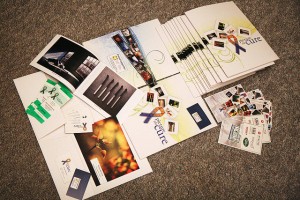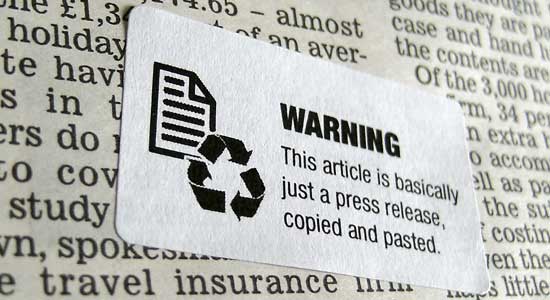10.7 Evaluating Information Subsidies
An information subsidy is something that is provided to the communicator at a lower “cost” than if the communicator had to go out and generate that information from scratch.

Media professionals gather information from a wide variety of sources using an array of techniques. Among the richest veins of material are the information subsidies created by organizations and institutions. These information subsidies come in the form of news releases, media kits, sound-bite-ready interviewees, briefing papers, privately-funded research studies, and thousands of other sources of facts, figures and interpretations. The organizations create them based on their own research and to promote their organizations’ needs and interests.
You must acknowledge that selecting information subsidies from a particular organization will lead you in some directions and not others; that you are, by definition, being exposed to one particular point of view when you select some information subsidies and not others. You are obligated to determine whether that point of view is appropriate for your message, and to tell the audience where your information came from.
For example, a “campaign watchdog group” once released a study detailing millions of dollars of political contributions by trial lawyers. The group who claimed that trial lawyers were exerting undue influence on political campaigns decried this “special interest” money. The study was widely reported in mainstream media reports.
But the Washington Post discovered that a tobacco company, Philip Morris, funded the study and their PR firm created the group who did the study. The “campaign watchdog group” was, in fact, a PR tool intended to generate press coverage favorable to the client’s causes.
Why would the tobacco company’s PR firm do this? Big business in general does not like trial lawyers, and tobacco companies, specifically, do not appreciate trial lawyers’ meddling in their affairs through filing lawsuits and damage claims. It was in the interest of tobacco companies to secretly create the “watchdog” group, fund a study that found fault with the behavior of trial lawyers, and then provide those figures to the media with the veneer of respectability and independence the “watchdog” group provided. (Marcus)
This does not necessarily mean the study itself was fraudulent. In fact, the findings were based on public documents available from every national and state political campaign about which groups give money to candidates.
But the vested interests of the providers of the information subsidy were highly relevant to the question of whether the media should have reported on the study the way they did.
The example is a reminder about why it is important to try to evaluate the special interests or hidden affiliations of people or organizations that are providing information subsidies. Media professionals have the responsibility to find out who is providing an information subsidy, for what purpose, and with what intention.

There have been attempts to help information gatherers detect when a news story might be a thin rewrite or cut-and-paste of news releases, one of the most common types of information subsidies for journalists. An organization called Churnalism.com was an independent website built by a British non-profit organization to help information gatherers distinguish between original journalism and repackaged information subsidies. Although its funding has been problematic and it is currently offline, reading about some of the examples of “churnalism” in this article will help you understand the issue.
There is nothing wrong with using information from a news release. The problem arises when a news release is presented verbatim or with no original information added in a news organization’s content without being labeled as sponsored information. The Churnalism site allows you to paste a URL or a bit of text from information you found and check to see if it comes from a news release. You can imagine that this tool is also useful for PR practitioners who want to track how their news releases are being used by news organizations.
The 18th century preacher and poet William Ellery Channing was talking about personal integrity when he said, “It is not the quantity but the quality of knowledge which determines the mind’s dignity.” [1] But in the context of message creation it holds true that “It is not the quantity but the quality of information which determines the message’s viability.” As you begin the task of evaluating information for specific research tasks, remembering this will help you select, and reject, material from which you will craft your message.
- Page 90, Complete Works of William Ellery Channging, Christian Life Publishing, Strand, London, 1884. ↵

